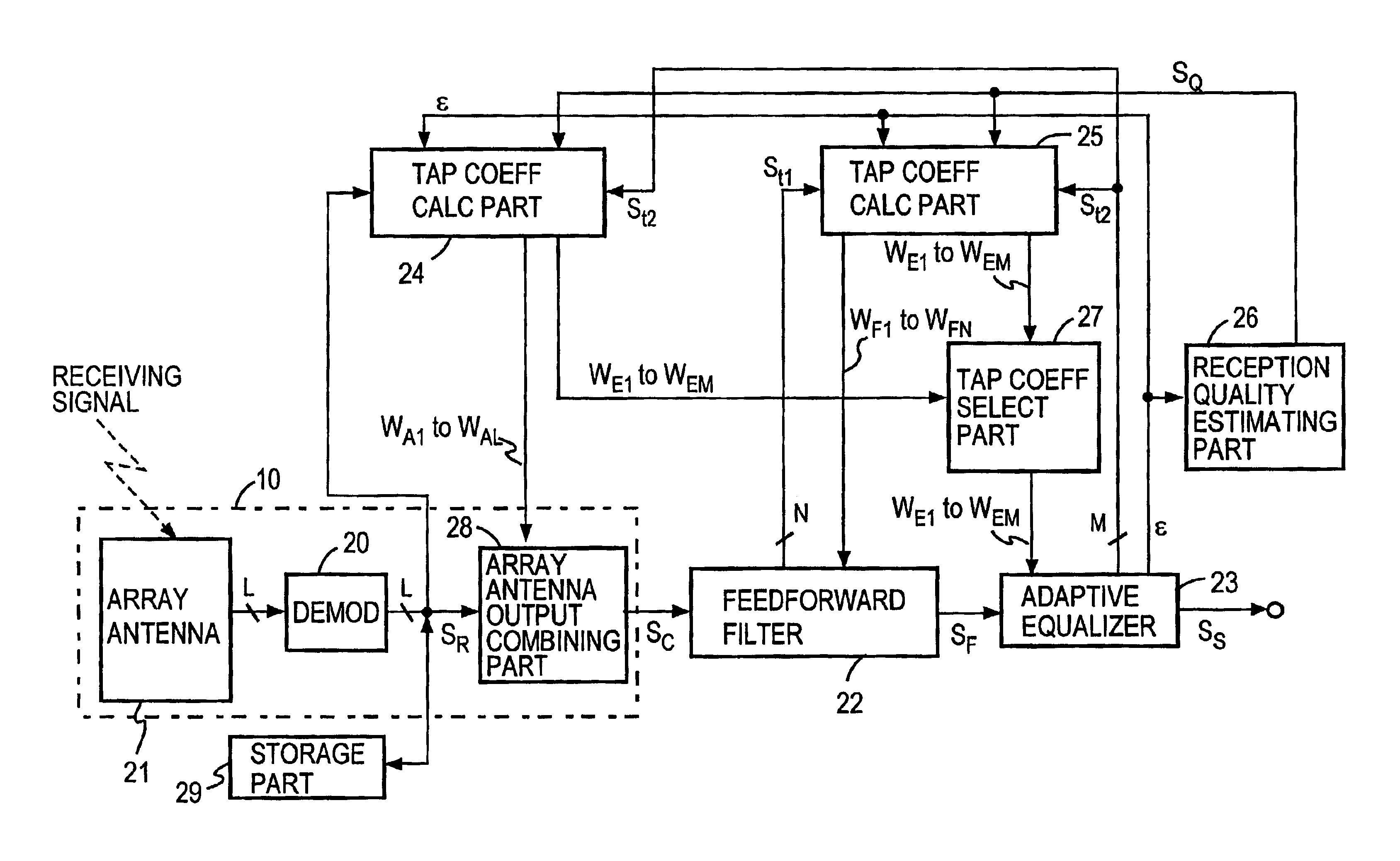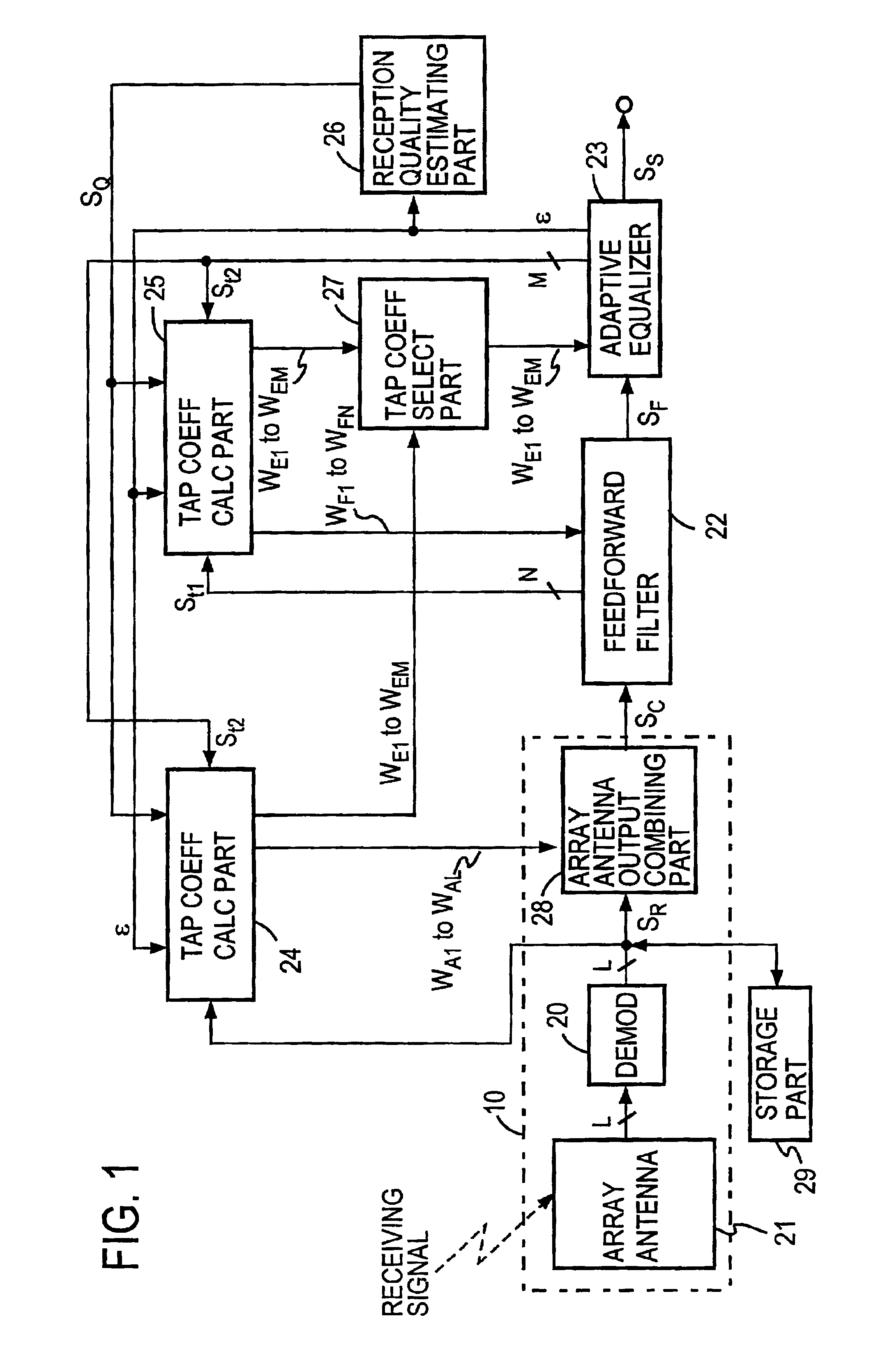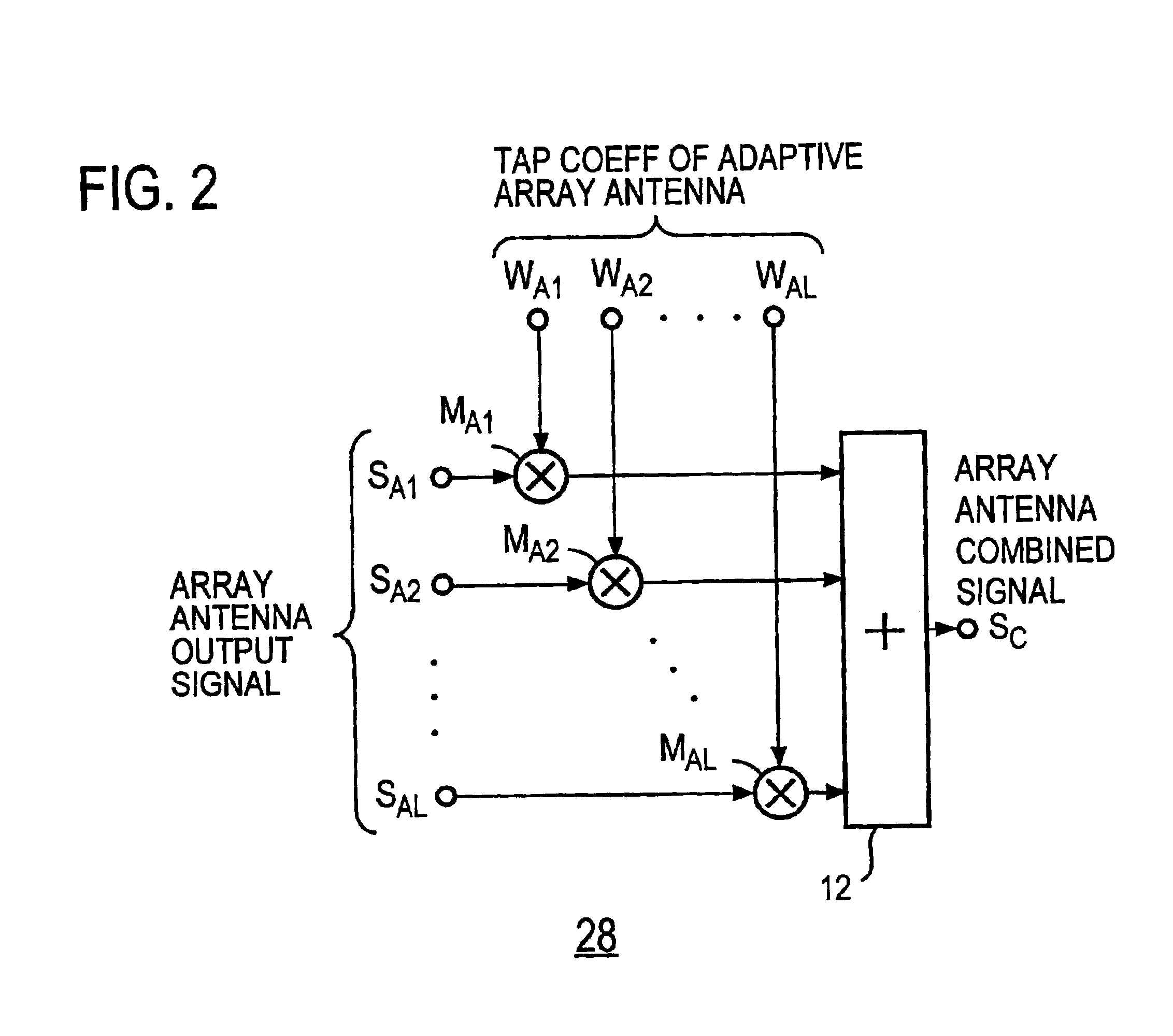Spatial and temporal equalizer and equalization method
a technology equalization method, which is applied in the field of spatial and temporal equalizer, can solve the problems of extended time of convergence of tap coefficients, inability to achieve sufficient convergence, and computation complexity of tap coefficient calculation
- Summary
- Abstract
- Description
- Claims
- Application Information
AI Technical Summary
Benefits of technology
Problems solved by technology
Method used
Image
Examples
first embodiment
FIG. 1 illustrates in block form a first embodiment of the spatial and temporal equalizer according to the present invention, which is an improvement of the prior art described previously with reference to FIG. 11. Hence, the equalizer of this embodiment basically includes an adaptive array antenna 10, a feed forward filter 22, an adaptive equalizer 23 and tap coefficient calculating parts 24 and 25 as is the case with the FIG. 11 prior art example. An array antenna 21 in the adaptive antenna array 10 corresponds to the antenna elements A1 to AL in FIG. 11, and array antenna output combining part 28 corresponds to the multipliers M1 to ML in FIG. 11 as described later on with respect to FIG. 2. The feed forward filter 22, the adaptive equalizer 23, and the tap coefficient calculating parts 24 and 25 correspond to the feed forward filter 14, the adaptive equalizer 11 and the tap coefficient calculating parts 16 and 17, respectively, in FIG. 11.
The spatial and temporal equalizer accor...
second embodiment
Usually, the symbol timing for demodulation is made to coincide with the timing of the leading wave of the received signal. In the MLSE type equalizer of FIG. 4A that achieves the most excellent receiving characteristic, the above-mentioned timing is taken as time 0 (i.e., current time point) and a replica signal is generated from a symbol candidates at time 0 and past or previous symbol candidates (−T, −2T, . . . ) for equalization.
However, when there is a synchronization error in the symbol timing regenerated at the demodulator side or when the receiving level of the delayed wave is remarkably higher than the receiving level of the leading wave, components of future symbols subsequent to the current symbol timing are contained as intersymbol interference in the received signal. Since such future symbol components are not contained in the replica signal that is generated in the equalizer, the estimation error increases and the receiving characteristic is degraded accordingly.
When t...
third embodiment
A decision feedback equalizer can be used as the adaptive equalizer 23 in the FIG. 1 embodiment. FIG. 9 illustrates an example of its configuration. In this instance, a fed-back version of the decided symbol signal is used in place of the symbol candidate signal used in the maximum likelihood estimation type equalizer. That is, a replica of delayed components of received symbols prior to the current received symbol is generated by a replica generator 32′, then the replica of the delayed components is subtracted by an adder 34A from the filtering output signal (received signal) SF fed from the feed forward filter 22, and it is decided by a decision device 42 whether the output from the adder 34A is 1 or 0.
This decision result is output as a decoded symbol, and it is input to a series circuit of unit delay elements DU1 to DUM-1 each having a delay time of one symbol period T. The output signals from the delay elements DU1 to DUM-1 are complex-multiplied by tap coefficients of adaptive...
PUM
 Login to View More
Login to View More Abstract
Description
Claims
Application Information
 Login to View More
Login to View More - R&D
- Intellectual Property
- Life Sciences
- Materials
- Tech Scout
- Unparalleled Data Quality
- Higher Quality Content
- 60% Fewer Hallucinations
Browse by: Latest US Patents, China's latest patents, Technical Efficacy Thesaurus, Application Domain, Technology Topic, Popular Technical Reports.
© 2025 PatSnap. All rights reserved.Legal|Privacy policy|Modern Slavery Act Transparency Statement|Sitemap|About US| Contact US: help@patsnap.com



